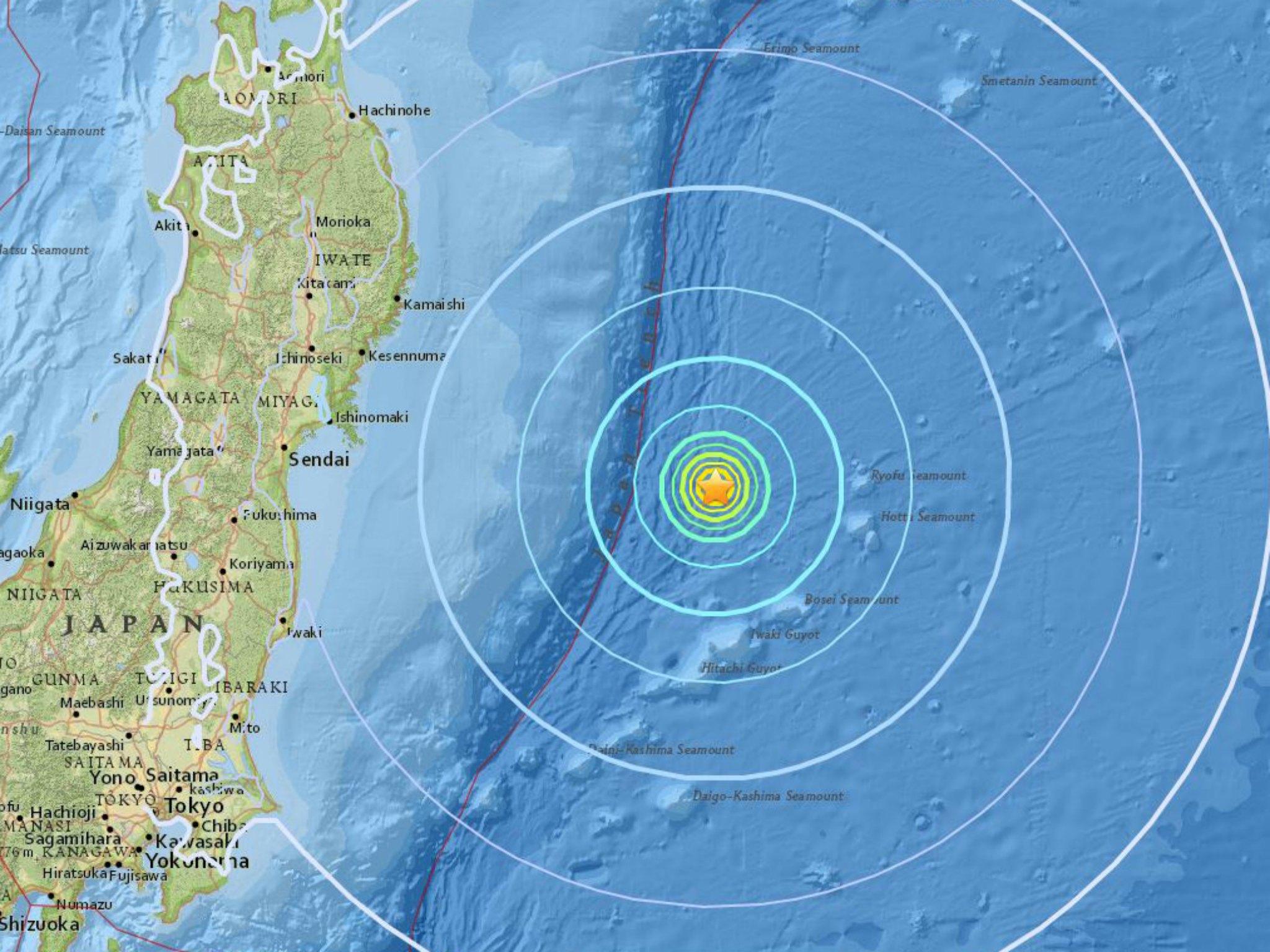A powerful 7.3 magnitude earthquake has hit the coast of Tohoku in eastern Japan on Saturday 13th February 2021. The earthquake hit at around 11.08pm local time but no tsunami warning was issued, the Japan Meteorological Agency said.
The epicenter of the quake was off the coast of Fukushima, with a depth of 36 miles, the Japan Meteorological Agency (JMA) said. The strong quake was felt widely across Japan and jolted Miyagi and Fukushima, while there were reports of buildings shaking in Tokyo.
Katsunobu Kato, a top government spokesman said at a recent news conference that the earthquake left at least 50 people injured and multiple power plants went offline. The impact was nationwide, with at least 950,000 homes losing power as of midnight. Mr Kato went on to state that there was no danger of a tsunami from the quake. He also said that some trains in north-eastern Japan had stopped running and that other damage was still being checked.
The earthquake also hit the Hamadori region, which is home to the Fukushima Daiichi Nuclear Power Plant in Ōkuma, Fukushima Prefecture. Tokyo Electric Power Company said there were no irregularities at the Fukushima Daiichi nuclear plant which was a great relief after what had happened last time this power plant was hit with by an earthquake.
Japan’s Meteorological Agency says it considers Saturday’s earthquake off the east coast to be an aftershock of the deadly 9.0-magnitude earthquake that struck the same area almost 10 years ago.
On March 11, 2011, the coast of Tohoku in Japan was hit by a more powerful earthquake that triggered a tsunami wave that killed over 15,000 people, while hundreds of thousands more lost their homes, according to the Japanese National Police Agency.
The 2011 earthquake caused the country’s worst nuclear disaster when three reactors at the Fukushima Daiichi nuclear plant melted down. This released radioactive materials into the atmosphere forcing the government to declare an evacuation zone with a 20 km radius. This resulted in 154,000 residents being evacuated from the communities surrounding the plant due to the rising off-site levels of ambient ionizing radiation caused by airborne radioactive contamination from the damaged reactors.
It was the most severe nuclear accident since the Chernobyl disaster in 1986. It was classified as Level 7 on the International Nuclear Event Scale, joining Chernobyl as the only other accident to receive such classification.
Japan’s Prime Minister Yoshihide Suga reassured the public that following Saturday’s quake “no abnormalities” have been reported at any of the nuclear plants in the region. However, the JMA has put out an official warning that there may be strong aftershocks throughout Japan over the next week so watch this space for more updates.


Leave A Comment